Buying pints on an early-summer evening in Dublin may have seemed a pleasant task, but it was work all the same. John Paul Phelan, the Fine Gael TD for Carlow-Kilkenny, has supported Leo Varadkar for years, and one of the more useful services he rendered to his friend was playing political gatecrasher on Tuesday, May 23rd.
Word had filtered back to Varadkar's leadership-campaign team that a TD in their column, the Clare representative Joe Carey, had been spotted in the Ginger Man pub, on Fenian Street in Dublin, in the company of Seán Barrett, the former ceann comhairle, who's a Simon Coveney supporter. The Ginger Man, just metres from Taoiseach Enda Kenny's Dublin apartment, is a well-known Fine Gael haunt.
Barrett, the long-time TD for Dún Laoghaire, is friendly with Carey's father, Donal, a former deputy. Phelan was sent to ensure there were no attempts to turn Carey jnr Coveney's way. All he had to do was join them at the bar and buy a few drinks. He left the pub with his task completed, his wallet a bit lighter.
0 of 3
The result of the contest was never in doubt after the opening 48 hours, when Varadkar blitzed Coveney with early declarations of support
The result of the Fine Gael leadership contest was never in doubt after the opening 48 hours, when Varadkar blitzed Coveney with early declarations of support from fellow members of the parliamentary party – TDs, Senators and MEPs – but he had to ensure there was no slippage in his support all the same. There was never likely to be, despite Coveney's efforts to turn support his way.
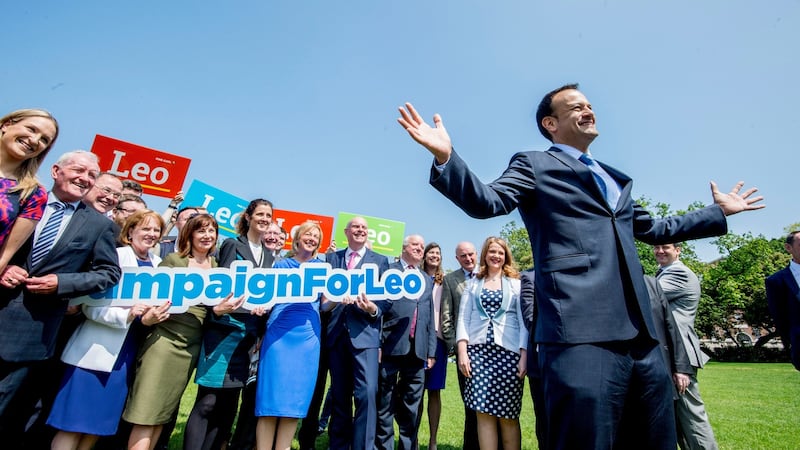
Varadkar’s strong victory yesterday was sealed in those crucial two days after Kenny stood aside, but the shock and awe was made possible only by years of preparation. Carefully cultivated relationships ensured that Varadkar’s campaign organisers knew they could call on formidable support when they needed it.
Coveney's supporters were right when they argued that the contest to succeed Kenny was sealed in Leinster House.The Varadkar camp had focused on the parliamentary party. But they were wrong to argue that it had been done in two days. It had taken much, much longer than that.
“If I rang Leo he’d answer or at least call back within an hour,” one backbencher said this week. “It wasn’t like that with Simon. And you always thought, What would it be like if he were taoiseach? If I can’t get him now, as a Minister, will I be able to get him on the phone if he is taoiseach and a factory closes down in my constituency?”
Ministerial machine
Varadkar had built a ministerial machine around him that was widely viewed as the most responsive to the political needs of backbenchers and councillors. John Carroll, who is now chief executive of the Public Relations Institute of Ireland, acted as liaison with the parliamentary party, looking after local concerns of TDs and Senators that came under Varadkar's departments.
When Carroll moved on his position was filled by Philip O’Callaghan, a young political operative. One source describes Carroll, who came back on board for Varadkar’s leadership campaign, and O’Callaghan as “Fine Gael people who know what politicians want and need”. Both were employed as constituency staff but took on greater responsibilities.
In addition, Varadkar has had the same two key people by his side since his appointment as minister for transport, tourism and sport, in 2011. Brian Murphy, his special adviser, has come up through the ranks in Fine Gael. He served as chairman of Young Fine Gael and later chaired the party's executive council: he knows the organisation to its core. To the public at large he is best known as the man who asked the question, on RTÉ's Questions and Answers, that led to the downfall of Brian Lenihan snr, the late Fianna Fáil tánaiste, during his run for the presidency, 27 years ago.
Nick Miller, Varadkar's press adviser, brought a political edge to communications sometimes lacking in some of his colleagues.
The Varadkar machine has been on the road for years, ever since his appointment to cabinet, meeting party activists and councillors as he travelled the country
The Varadkar machine has been on the road for years, ever since his appointment to cabinet. The three positions he has held – in transport, tourism and sport; health; and social protection – gave him opportunities to meet party activists and councillors as he travelled the country.
He has been building relationships with three factors in mind: the possibility of a leadership run; cultivating the friends a minister needs when he or she is in difficulty; and making staff available to service the needs of politicians. Above all of it has been the availability of Varadkar himself to his electorate, as well as his abilities as a politician.
Despite all the years of preparation it was just as this Government stuttered into existence that Varadkar began to tell people he wanted to be leader of Fine Gael. An obvious answer to an obvious question, perhaps, but it still takes an expression of desire from the candidate for those gathering around to take it seriously.
Snap election
Fine Gael was preparing for the eventuality of a snap election if the talks to piece together a minority administration after the general election of February 2016 failed, and Kenny had already said it would be his last election as leader. The clock began ticking the minute those words passed Kenny’s lips.
Tom Curran, the Fine Gael general secretary, had already identified Paschal Donohoe as an honest broker among the competing ambitions at the top of the party. Curran spoke to Donohoe about scenarios in which Fine Gael could choose a new leader rapidly in the event of a snap election.
Everyone knew the serious candidates would be Varadkar and Coveney, and Donohoe’s position that he did not want to stand was taken seriously. He would be trusted with helping to organise a contest that most likely would have been confined to the parliamentary party, rather than also being put before councillors and the wider membership; nor would there have been the hustings of recent weeks.
But it never came to that. Kenny was elected Taoiseach at the fourth time of asking, on May 6th, 2016, yet the issue of his leadership lingered over the first year of this minority Government.
As they supped pints in the evening, or chatted after the marathon negotiating sessions, Kenny repeatedly told his senior Ministers that he wouldn’t be hanging on indefinitely. “He said to us, ‘I’m not going to be around forever,’ ” one person privy to those discussions said. “That was a signal.”
Varadkar was much more prepared than Coveney. Even Fine Gael headquarters had been preparing for a contest for a year
It was a signal to get ready. And the past few weeks have shown that Varadkar was much more prepared than Coveney. Even Fine Gael headquarters had been preparing for a contest for a year, with Curran and Gerry O’Connell, the returning officer for the leadership election, meeting every week to finesse the process.
It was around the uncertain period of government-formation talks that Varadkar confided to Eoghan Murphy, the Dublin Bay South TD who would help orchestrate his campaign, that he wanted to lead the party, and that he was ready for it.
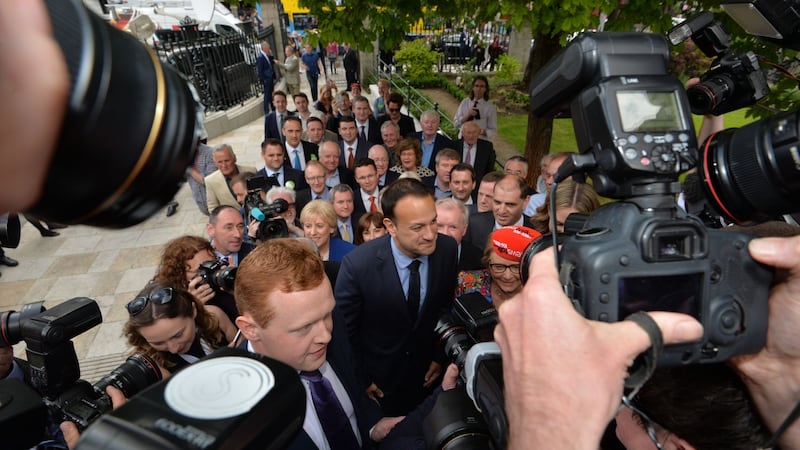
Kenny’s leadership was also an issue within the party in late 2014, when the then Fine Gael-Labour coalition was at its lowest ebb, as it reeled from the introduction of water charges. Some looked to Varadkar then, but he was not yet interested.
Coming out
Vardkar had another issue to deal with: he had yet to come out publicly as a gay man. He did so in January 2015, months before the marriage-equality referendum, in an interview on RTÉ Radio 1 with Miriam O'Callaghan. Varadkar's sexuality by that stage was on open secret in political and media circles. Radio was the natural outlet for the announcement, his advisers believed, because it was live and could not be sensationalised. His rapport with O'Callaghan was also cited.
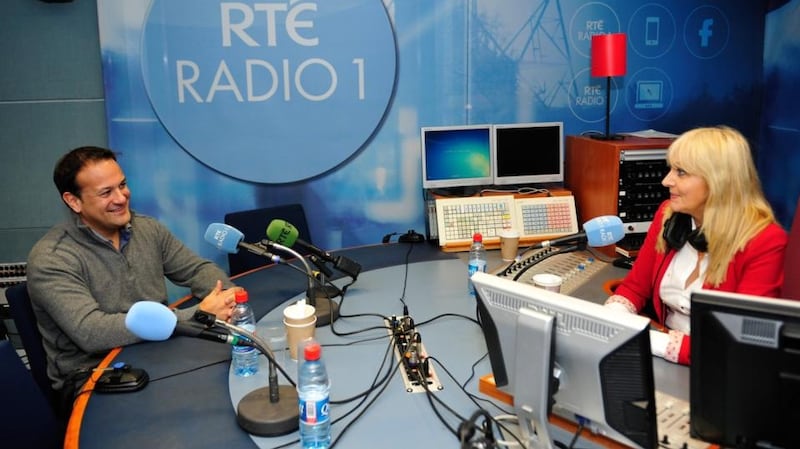
The uncertainty about his ambitions had vanished by the spring of 2016. He told Murphy – and, later, others – that he wanted to lead. He had previously tried to conceal his ambitions, and divert the suspicions of those around Kenny, by claiming that he wanted to take a gap year, or career break, a ruse that he dropped when it began feeding a narrative that he perhaps did not want to be taoiseach at all.
When the Government was formed Kenny appointed Varadkar to a ministry that would allow him to spend a lot of time on the road, visiting councillors, TDs and the Fine Gael organisation generally – even if that had not been Kenny’s original intention.
Varadkar's move from the Department of Health to the Department of Social Protection – after he had effectively asked Kenny for more money and the ability to pay sought-after staff higher salaries, both of which were seen as impossible demands – meant he had more time than Coveney, over at the Department of Housing, Planning, Community and Local Government, to woo the electorate.
Varadkar knew he needed to woo voters in a structured way. When you were landing in a town you were making sure you hit all the right places
“I think he knew that he needed to be doing it in a more structured way. When you were landing in a town you were making sure you hit all the right places, in terms of who you were meeting,” a source said.
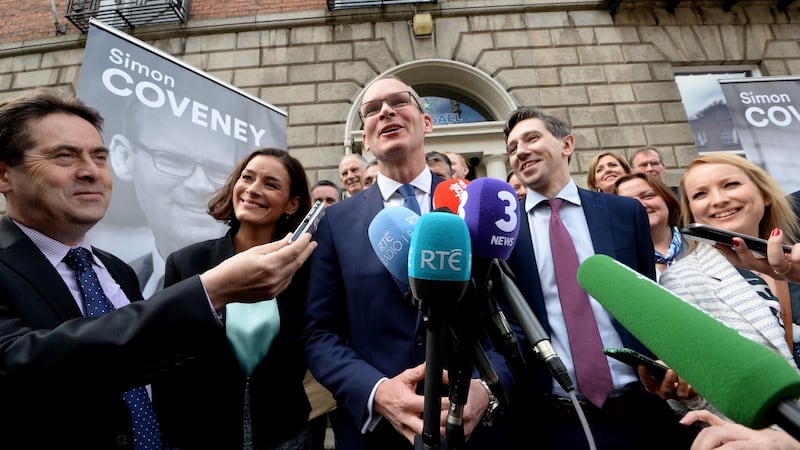
Varadkar’s critics said he ran away from the challenge of health, whereas Coveney embraced the challenge of his department. It meant that Coveney would not turn his eyes towards the leadership until it was too late to catch Varadkar.
Politicians follow wherever power shifts. Pledges of support for Varadkar’s leadership bid came in three phases. The first pledges were from people who offered him support if and when the vacancy arose. The second batch came through meeting people for lunch or drinks and allowing a future run to come up in conversation. The final phase was the canvassing of recent months.
A crucial encounter came in the summer of 2016, as the Government tried to find its feet. Kenny’s leadership suffered its most significant buffeting in years when his position at the top of Fine Gael was openly questioned for the first time since the failed heave of 2010.
A combination of anger about James Reilly’s reappointment as deputy leader of Fine Gael and criticism of the granting of a free vote to the Independent Alliance on an abortion Bill in the Dáil caused a mini rebellion at the parliamentary-party meeting of Wednesday, July 6th.
Deputies Jim Daly, Brendan Griffin, Fergus O'Dowd, Michael W D'Arcy and Patrick Deering all spoke up that week, either at the meeting or in the media. There were calls for Kenny to stand down after that October's budget, an early marker that a small group were determined to cause trouble.
During the failed heave against Kenny by Richard Bruton in June 2010, Paul Kehoe, the Wexford TD, had, along with Phil Hogan, helped to see off the rebels – who then, of course, included Varadkar and Coveney.
Now Kehoe sought Varadkar out. The National Day of Commemoration takes place on the Sunday closest to July 11th each year, to mark the Irish men and Irish women who have died in wars or in service with the United Nations; the date remembers the signing, in 1921, of the truce that ended the War of Independence.
The President, the Cabinet, TDs, Senators and dignitaries gather at the Royal Hospital in Kilmainham to pay their respects. The ceremony took place on July 10th last year, and Kehoe asked Varadkar for lunch afterwards.
Kehoe told Varadkar he would support his candidacy on one, strict condition: there would be no move to take Kenny out
He told Varadkar he would support his candidacy for the leadership, and help him to win the contest, on one, strict condition: there would be no move to take Kenny out. “There will be f***ing war” if that happens, Kehoe said. Varadkar could win over the party loyalists whom Kehoe was associated with if he gave the Taoiseach time and space to stand aside.
It was a view Varadkar was to hold even as motions of no confidence in Kenny came on the agenda in the months ahead. Hogan, Kenny’s main defender in 2010, also offered advice regularly and spoke to Varadkar by phone every week.
D’Arcy and Kehoe, who are constituency colleagues in Wexford, have an uneasy relationship, yet they, along with Phelan, were key operators for Varadkar in the parliamentary party.
Phelan and D'Arcy were associated with the anti-Kenny wing of Fine Gael, and they largely helped to manage relationships among that group of TDs and Senators. They also tried to box Coveney into his Cork base by tying up the support of as many Oireachtas members and councillors as they could from everywhere else in the State.
Campaign structure
The structure of the Varadkar campaign was taking shape as the Dáil went into recess last summer, and the Minister continued to meet TDs, open constituency offices and engage in more soft canvassing over the holiday months. But the level of preparation would shift up a gear with the Dáil’s return.
The annual think-ins that political parties hold are a tired format, disliked by politicians and media alike. But behind the socialising they can provide an opportunity for a party to put its best foot forward – and Kenny attempted to use the gathering last September, in Newbridge, Co Kildare, to claim he had got his mojo back. Instead he was met with renewed calls for leadership change from Griffin, Daly and other TDs.
By this stage the rebel deputies were causing difficulty for Varadkar. They were known to support him. He could not alienate them by seriously criticising them, but, despite suggestions to the contrary, he was not orchestrating the attacks on Kenny. “We could not dump on them,” but “they were giving a little push at a time when a little push was needed,” a source said.
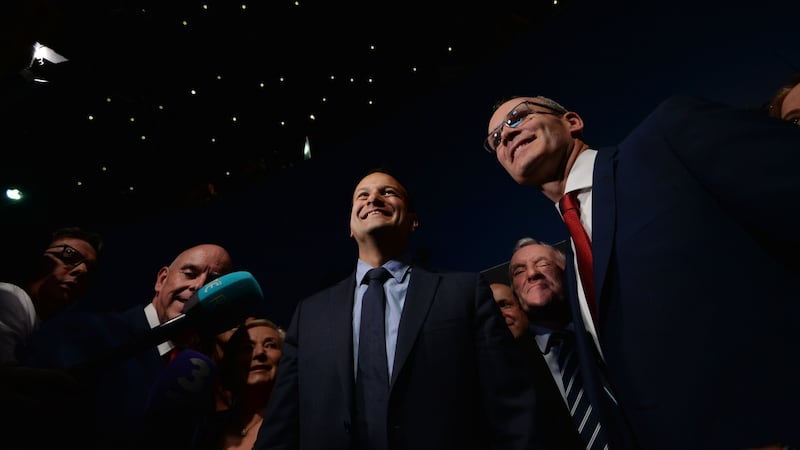
A key decision was made that week that would advance Varadkar’s preparations even further. A belief took hold in his camp that even if he was not behind any move against Kenny he would be associated with it anyway. Better off, then, to prepare for a contest, whenever it came. This did not, however, mean drawing up lists of likely supporters.
“The lesson from 2010 was not to waste precious time sitting around with bull**** lists talking about what Frankie and Paddy might do,” a source said. “Better to spend that time talking to Frankie and Paddy.”
The Paddy in question is Paddy Burke.
Burke is not a national figure, but he is significant in Fine Gael. A keen golfer from Castlebar, in Co Mayo, Burke is a career Senator who served as cathaoirleach between 2011 and 2016. He had been appointed by Kenny, his old friend, although Leinster House gossip has it that the pair have become estranged of late, for reasons nobody can decipher. Burke and Kenny were councillors in Co Mayo together for 20 years; they now have little contact.
Varadkar met Burke in the weeks after the think-in and solicited his support. Burke is a political warhorse who fought with Kehoe and Hogan to save Kenny’s skin in 2010 and was cute enough to know why Varadkar had approached him so early – earlier, in fact, than he had approached the Cabinet.
In the language of the Varadkar camp Paddy Burke was an influencer: someone who could bring others in the Seanad with him
In the language of the Varadkar camp he was an influencer. In the language of old politics he was someone who could bring others in the Seanad with him.
By contrast the Coveney camp did not contact the Mayo man until two weeks before Kenny officially stood down, last month. Burke did not tell Coveney that he was supporting Varadkar until the night before he ushered nine Senators before a bank of microphones, on the opening day of the leadership campaign. In doing so he helped to demolish a belief in the Coveney camp that they would win the Seanad. One of the nine was the aforementioned Frankie: Frank Feighan, a Roscommon Senator.
Varadkar’s sheer preparedness helped to dissuade colleagues from standing. “I could see other candidates who had put in a lot of work to get to that point – one in particular,” a Minister who was mulling a run said.
As Varadkar began to spread his base in the parliamentary party, rumblings against Kenny continued, with periodic speculation about a motion of no confidence. Those around Government Buildings were aware of the danger, and were prepared to fight one if it came, although it was seen as unlikely. Kenny knew he had the numbers.
“If that eventuality had have happened, it would have been fought and it would have been defeated,” a source close to Kenny said. “He knew he’d win it,” a Minister close to the Taoiseach confirmed. Despite grumblings there was never a desire to see Kenny forced out of office because of a motion tabled by a small group.
Half of Varadkar's backers wanted Enda Kenny removed as quickly as possible. The other half wanted him to go in his own time
Varadkar’s backers in the parliamentary party could be divided in half: those who wanted Kenny removed as quickly as possible and those who wanted him to go in his own time.
Conscious that they would be defeated if they tabled a motion against Kenny, the hardcore rebels stayed quiet. They concluded that a move against the Taoiseach would be defeated – and only lengthen his tenure by another 18 months, at least.
“What got Kenny was that we all shut up,” one said. “They expected a fight, and they would have won it, even though there may have been worth to having it. But we shut up and let events happen, and that’s what did it.”
Varadkar was never going to move against Kenny, despite being urged to do so by some, yet there was concern about what to do were a motion tabled without his knowledge or approval.
John Deasy, the Waterford TD, has long been a critic of Kenny's, yet he largely stayed away from overt criticism of the Taoiseach during this Dáil. But he socialised with Daly and others, and he was able to read their mood. Around Christmas Varadkar met Deasy and asked after his friends' intentions. Deasy confirmed that there would be no motion and that Daly, Griffin and others were happy to let events take their course.
It chimed with Varadkar’s stance of not moving against Kenny, although events would soon lead to more pressure for him to do so. It also ensured that he kept together his coalition of TDs, who had diverging views of Kenny. As the rebels stayed quiet they looked to Varadkar and Coveney to take responsibility for the leadership of the party.
It was often suggested that the two should tell Kenny to stand down, or outline a timetable for his departure. Both insisted that would never happen, although it is understood that such a prospect was mooted in a conversation between the pair last summer or autumn.
Sources said they discussed hypotheticals, possible scenarios, leaning towards asking Kenny for a transition plan rather than an immediate departure. A spokesman for Coveney said he had no knowledge of such a discussion.
Whistleblower
The controversy about the Garda whistleblower Maurice McCabe eventually brought matters to a head. This period saw the first serious discussion of a motion of no confidence in Kenny, with divided opinion in Varadkar’s group. True to his original interactions with Varadkar, Kehoe was strongly against it, as were D’Arcy and Varadkar himself.
The “basic equation” was trying to ascertain what Coveney and his supporters would do; once the Minister for Housing made clear that he was going to be loyal to Kenny a motion was a nonrunner.
One of the lessons of 2010: only put down a motion of no confidence if you know you'll be on the winning side
"If Enda Kenny would have called a vote himself he would have won, and maybe he'd still be leader," a source added. "One of the lessons of 2010: only put down a motion of no confidence if you know you'll be on the winning side."
But those close to Kenny insist that he always intended to go by this summer. He may have departed a little earlier than planned, they say, but he had ample opportunity to lengthen his stay if he so wished.
“Since he made the original commitment” not to lead the party into another general election “there have been several opportunities to reset that if he wanted to, not least Brexit. The reality is he didn’t change his position.”
But the dynamic completely changed when Varadkar, followed by Coveney, took to his feet at the parliamentary-party meeting on February 15th this year, in the middle of the McCabe controversy. They both said Fine Gael needed to be ready for an election, which was interpreted as a signal to Kenny that he had to stand down soon. Both men were responding to concern from TDs that the party, then engulfed by the biggest crisis of this Government, could be pitched into an election with Kenny at the helm.
Numerous sources insist that both interventions were spontaneous. Varadkar and Coveney had a one-to-one meeting in the ministerial corridor in Leinster House shortly after that party gathering.
Kenny read the signs and told his parliamentary party the following week that he would deal with his leadership “effectively and conclusively” when he got back from his St Patrick’s Day visit to Washington, DC. He may have stretched his timetable somewhat, but that week settled Kenny’s fate. It was now only a matter of when, not if, he would depart.
“That was it. There was no need after that,” one rebel TD said. “The game was up.” For Varadkar and Coveney it meant their campaigns could come out from the shadows.
By now Varadkar had moved to tie up support among the Cabinet. He personally canvassed for all his votes in the parliamentary party; Kehoe, D’Arcy and Phelan, with Eoghan Murphy at the apex, helped to manage relationships once the votes were won. Only Brian Murphy, Eoghan Murphy and Varadkar himself knew exactly whose support had been secured.
It was different with the Cabinet: Varadkar managed those relationships himself. He approached one senior Minister in February. “We had a cup of coffee, and he asked me would I support him when the time came. Simon approached me the week before the Taoiseach made his announcement at the parliamentary party” – which is to say in early May.
Another Minister confirmed the pattern: “Simon didn’t approach me until Easter.”
"Leo handled the Ministers himself," a source added. Charlie Flanagan "had been boxed off from a long way out. Leo had been working him for months."
Coveney used the Easter break to travel the country, meeting TDs, councillors and Senators. Coveney's campaign manager, Damien English, often made the first approach.
The Varadkar team checked in after Easter to see if anyone they were counting on felt like switching sides after a visit from their rival. They felt reassured that any slippage was minimal.
Sexuality
Although almost everything else was planned, the Varadkar camp maintain that they never made contingencies for his sexuality to become an issue. In late February, however, the Irish Independent ran an article that included photographs of Varadkar with his partner, Matthew Barrett.
It came as a surprise, and the campaign discussed how to react. They decided to do nothing, as any action could be perceived as playing the sympathy card. "We never had a discussion around the gay thing in the campaign," a source said. "It was just not something that we felt we needed to consider. So it wasn't how we were going to manage this issue. It was never anything like that. As far as we were concerned the Indo moved too early and took it off the table."
Varadkar's sexuality was an issue for some Fine Gael members. 'I don't know,' said one voter. 'He'd be living up there with a man'
But Varadkar's sexuality was an issue for some Fine Gael members. One of his team was speaking to The Irish Times on his mobile while out canvassing in his constituency on a Friday morning. As he approached the door of a Fine Gael-supporting older woman he put his phone by his side, but the line was still open. He canvassed hard for Varadkar, but the woman was sceptical. "I don't know. He'd be living up there with a man," she said.
The campaign continued to lock down support. Once a vote was confirmed the information was fed back to the top of the campaign. Alan Holmes, who helps Eoghan Murphy with the logistics of his constituency campaigns, designed a system that allocated every Oireachtas member a number. Whenever one of them committed to vote for Varadkar, Holmes relayed the information back to Murphy, who fed the corresponding number into a grid, to maintain confidentiality.
It was a sophisticated operation that almost immediately had to be abandoned, as it was overly complicated. But the two Murphys, along with Varadkar, were still the only two who knew everything. The secrecy of their operation helped to manage expectations. They were both pleased, and somewhat astonished, when they saw the Coveney camp talk up its chances in the press, claiming, among other things, that they would win a majority in the Cabinet and the Seanad.
Olwyn Enright came on board to help out. Her input was particularly valued for its non-Dublin perspective
Olwyn Enright, the former Fine Gael TD for Laois-Offaly, came on board to help out; her input was particularly valued for its non-Dublin perspective, according to a source.
Her role included work on public relations and policy formulation, and on prepping Varadkar for debates and media questions. Others worked on “relationship intelligence”; a campaign source said, “If you had concerns over people, if you weren’t sure what way someone was going to vote, you’d have one or two people have a chat with him. ‘Leo tried speaking to X; X seems a bit cold; who do we know who can approach them subtly and find out what they really think?’ That kind of stuff.”
The wait went on for Kenny to formally announce his retirement. At times he seemed to be enjoying toying with his tormentors. On May 10th, at the parliamentary-party meeting the week before he stood down, he sat in his usual position, behind a table at the top of the room.
Kenny sat at one end, with James Reilly, the deputy leader, and Martin Heydon, the chairman of the parliamentary party, in the middle. As secretary, the Dublin North-West TD Noel Rock sat at the far end. Kenny scribbled a note to be passed to Rock, who had repeatedly called on the Taoiseach to relinquish the Fine Gael leadership.
Rock unfolded the note. “Dear Noel,” it began. It then mentioned that it had been a year since Rock nominated him four times as Taoiseach in the Dáil, and thanked the deputy for his support in the time since. Kenny, who had simply signed the note “E”, leaned back and chuckled as Rock read its contents. The old fox had some roguery left in him.
Resignation
The campaign officially began a week later, on Wednesday, May 17th, when Kenny announced his resignation. The Varadkar strategy, largely drawn up by Eoghan Murphy and John Carroll, was to kill the contest off in the 48 hours between the time Paddy Burke brought out his Senators on the Thursday morning and the formal campaign launch, on the Saturday morning, when Tánaiste Frances Fitzgerald and Michael Ring, Kenny's fellow Mayo TD, would introduce Varadkar. The offensive was managed by Eoghan Murphy, D'Arcy and Phelan from the campaign base, on Mount Street, and from a discreet apartment off Molesworth Street.
If the parliamentary party, which commands 65 per cent of the votes under the electoral college that decides the leadership, was effectively wrapped up, the media launches, the hustings and the remainder of the contest could be used to introduce Varadkar and his ideas to the public.
Fitzgerald had considered a run but eventually decided against it. Although a number of sources said the Tánaiste made clear that she was backing Varadkar only the day after Kenny announced his retirement, others said that she had previously told Varadkar she would support him if she did not run herself. Only Varadkar and Fitzgerald know exactly what passed between them.
Paschal Donohoe was always expected to support Varadkar, but he too had seriously thought about standing. He had been urged to run by party colleagues before Christmas, but he decided against it. He was always widely expected to support Varadkar, but he confirmed his support only after Kenny’s statement that he would deal with his leadership after St Patrick’s Day.
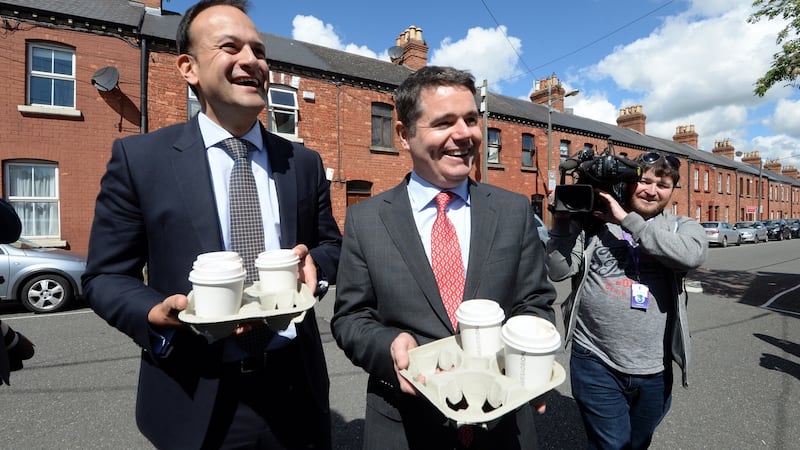
Donohoe – who was to play Coveney in mock hustings with Varadkar – then informed the Minister for Housing of his decision, in a short phone call.
The Dublin Central TD is tipped to take on the duties of Minister for Finance, in addition to his existing role as Minister for Public Expenditure and Reform, before a merging of the two departments back into one.
Richard Bruton declared for Varadkar on the first day of the campaign. He said he told the candidates of his plans only that morning, although there are suggestions that he had told Varadkar beforehand. Sources close to Bruton believe he was never serious about running. If he had run and lost it would have been a hat-trick of defeats in leadership contests.
By the Saturday morning of his launch Varadkar had secured 46 per cent of available votes. Undeclared TDs and Senators, particularly those who had suffered after choosing the wrong side in the 2010 heave against Kenny, were under pressure to come onside.
The previous evening Minister of State for Food, Forestry and Horticulture Andrew Doyle saw off pressure to encourage him to declare for Varadkar immediately. He said he would make his mind up by the time Varadkar visited his Wicklow constituency, the next Monday – and he duly declared his support for the Dublin West TD. Another Oireachtas member was warned not to mess up as he had in 2010.
Of the Varadkar campaign team only Eoghan Murphy believed Coveney might withdraw after the first 48 hours. He was in regular contact with Damien English, his counterpart in the Coveney camp. On the Saturday morning a wobble became apparent among some of the Corkman’s supporters.
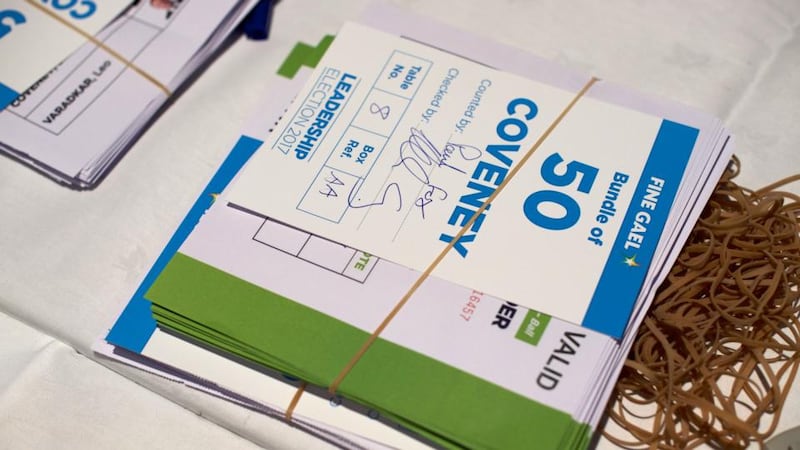
Tom Curran, the general secretary of the party, had also been in touch with English that morning to complain about comments made by Kate O’Connell, the Dublin Bay South TD, at a rally in Co Clare the previous evening, when she described Varadkar supporters as “choirboys” who were “singing for their supper”.
Some thought the choirboy comments were dog-whistle homophobia, but the Varadkar camp said it was merely the cut and thrust of the campaign
Some party members thought this was dog-whistle homophobia, but the Varadkar camp said it was merely the cut and thrust of the campaign. They had in fact been prepared to hit Coveney with heavy criticism about how unprepared he was, but they held off after O’Connell’s comments. Responding would merely make them look as if they were trading tit for tat.
Nominations closed that evening, and Curran wanted to know if headquarters might not have needed to begin a contest at all. Although some Coveney supporters wanted him to withdraw, multiple sources claim that he never seriously considered the possibility himself and that he decided to plough on and hold a scheduled rally in Cork that night.
“When he made his decision that was it, but the question was, does it make any sense?” one of the Coveney team said. “The rally in Cork settled it. His speech was brilliant.”
Amid the confusion of that day a rumour also spread to damage Simon Harris, Coveney's most senior supporter. Harris and Varadkar do not get on. The Minister for Health has his enemies among Varadkar's supporters and will need to rebuild his political capital in the party. He has spoken to the Varadkar camp about negative media stories about his new leader, although sources differ on whether he told them he was not responsible or if he was told they knew he was not to blame.
The contest was over, despite Coveney’s admirable fighting on. His handsome victory among the rank-and-file members was a testament to it – and possibly a reward for hanging in.
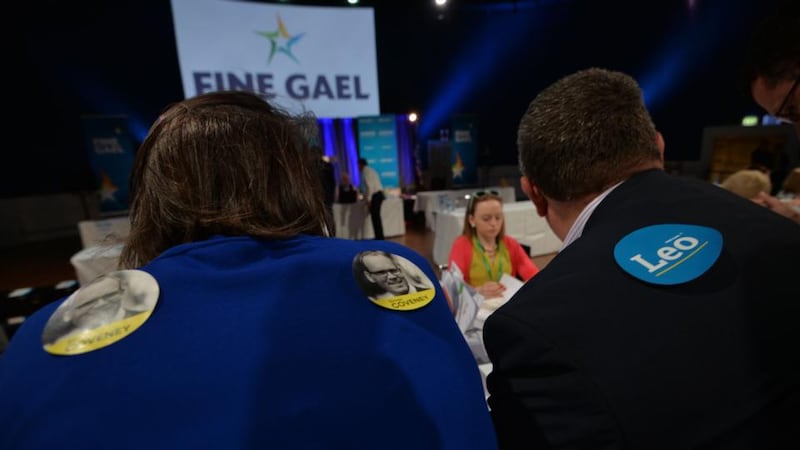
One Minister described Coveney as naive and overly optimistic in his earlier dealings with TDs and Senators, a trait some claim they saw during the government-formation talks with Fianna Fáil and in his recent belief that Fianna Fáil would eventually accept some sort of water-charging regime.
Although he said he had been promised support by people who eventually backed Varadkar because they wanted to be on the winning side, Ministers believe Coveney did not pick up on the signals in conversations with colleagues. “I think there were people trying not to be offensive to Simon, trying to be gracious to him,” one said. “I think the wrong end of the stick was taken in conversations then.”
Varadkar was described as direct, whereas Coveney was “woollier” in his very recent approaches. “Six weeks out, max,” was the time frame one Cabinet Minister put between Coveney’s approaches and Kenny’s retirement.
Yet despite some disappointment in the parliamentary party about Coveney’s tactics as he tried to claw his way back into the race – particularly his supporters’ giving journalists the names of TDs they believed might switch from Varadkar, and encouraging rank-and-file members to pressurise their local representatives into changing – his decision to fight on is widely acknowledged to have been the correct one.
Coveney's attempt to portray his rival as a dangerous right-winger is accepted as a necessary part of political campaigning
His positioning to the left of Varadkar, and his attempt to portray his rival as a dangerous right-winger, is accepted as a necessary part of political campaigning. “I would have done the same thing,” a Varadkar-backing Minister said.
Coveney’s supporters also offered Cabinet positions as enticements to potential switchers, but that is an understandable reaction to the impossible situation they found themselves in.
The Cork man has built up significant credit for participating in a process that has revitalised the Fine Gael organisation. The hustings, in particular, are acknowledged to have been a huge success. Varadkar says he wants to return more power to the grassroots and make ardfheiseanna forums for debates once more rather than just window dressing around a leader’s speech.
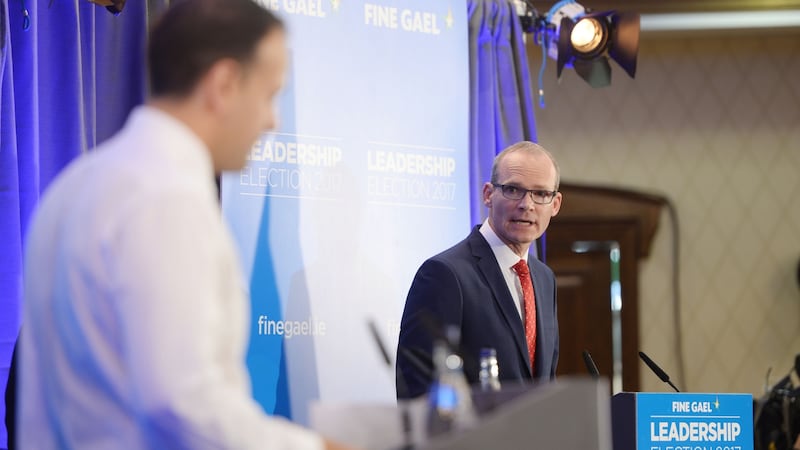
A problem Varadkar has now is that Coveney can cast himself as the voice of the members. At the hustings the Cork man said he would continue to fight for his Just Society principles even if he lost. The party grassroots have given him the political strength to do so.
Coveney supporters said that a lot of preparation work was done on policy rather than campaigning, but they are adamant that TDs who were inclined to support Coveney changed their minds as the Varadkar juggernaut gathered pace. “Damien English is a serious politician. Simon Coveney has been around for 20 years. It is too simple to say they just got it wrong. Something changed.”
Another said Coveney was “absolutely immersed” in his ministry. “He was flat out with housing and water.
Maybe it could be argued that, another year in the portfolio, he might have got out of the immediate phase of putting plans together and have more discretionary time.”
But Coveney took on the position of Minister for Housing for that very reason. His pitch was based on being a serious politician who could solve difficult tasks. “You would hear people in the party say he was naive in the politics of this,” an observer who has operated at the sharpest end of Fine Gael politics for almost two decades said. “Others would say earnest. But a service has been done to the party in allowing this go to the end.”
Varadkar understood that the oldest rules of politics will always apply: the electorate wants to be loved, and votes must be asked for
Varadkar understood that the oldest rules of politics will always apply: the electorate wants to be loved, and votes must be asked for. “It was based on strong personal relationships,” a backbencher said. “He developed strong personal relationships; the other fella let some drop. Coveney didn’t go up to enough people and say, ‘I’m asking, vote for me.’
“That was it. That was the basis of the blitzkrieg. They used that strategy because they were confident of their numbers and of their people.
“It was done over four or five years.”









